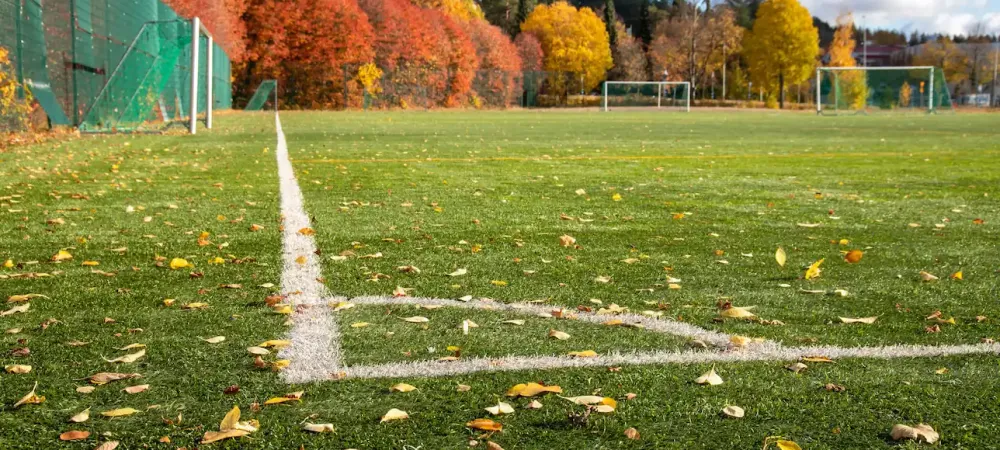How Climate Zones Change Your Fertilization & Overseeding Strategy

The right turf care strategy isn’t one-size-fits-all, and blindly following a national fertilization or seeding schedule could do more harm than good. Your region’s USDA hardiness zone and climate zone directly impact when and how you should apply fertilizer and overseed, especially on athletic fields. This guide breaks it all down by zone to help you build a reliable, science-backed turf care plan.
Quick Answer: How Climate Zones Affect Fertilization & Overseeding
Climate zones affect soil temperature, grass dormancy cycles, and growing windows—changing when you should fertilize and overseed. In Zones 4–6, cool-season grasses dominate, requiring early fall overseeding and timed nitrogen applications in late summer and early spring.
What Are USDA Climate Zones and Why Do They Matter
USDA Plant Hardiness Zones define regional climate conditions based on average minimum winter temperatures. Zones 4, 5, and 6 span much of the Midwest and determine what turfgrass types thrive best (USDA, 2023).
Cool-season grasses like Kentucky bluegrass, fescue, and ryegrass dominate these zones, and their seasonal growth patterns vary. Your zone also impacts soil temperatures, frost dates, and growing season length—critical factors when timing applications.
According to the University of Nebraska–Lincoln, "Cool-season turfgrasses grow best in temperatures between 60 and 75°F, with optimal root growth occurring when soil temperatures are between 50 and 65°F" (UNL Turfgrass, 2024). This means regional weather trends directly influence timing for fertilizer uptake and seed germination.
How to Adjust Your Turf Fertilization Plan by Climate Zone
Let’s break down how each climate zone shapes your fertilizer schedule, starting with the coldest regions.
Zone 4 (Colder Northern Midwest Areas)
- Short growing season with long winters.
- Fertilize in early spring (late April) and early fall (late August).
- Use slow-release nitrogen products to support gradual uptake.
- Avoid late fall applications due to early freezes.
Zone 5 (Central Midwest)
- Balanced growing season with moderate winters.
- Fertilize in early September and again in late October.
- Early spring (late March to mid-April) applications may help with green-up.
- Use a soil test to determine nutrient needs.
Zone 6 (Southern Midwest Transition Areas)
- Longer growing season with warmer temps.
- Split applications across late August, mid-October, and early March.
- More flexible window, but still time around rainfall and heat waves.
- Include micronutrient blends for heavily used fields.
The Ohio State University Turfgrass Program recommends adjusting fertilizer timing to match both soil temperature and turf stress load: "Avoid fertilizing during periods of drought or excessive heat, as nutrient uptake efficiency drops and disease risk increases" (OSU Turf, 2024).
Tools to Consider: Soil thermometers, soil test kits, GDD (Growing Degree Day) trackers, and moisture meters help dial in precise timing.
Zone-by-Zone Overseeding Strategy
Zone 4 – Best seeding window: Late August to Early September. Focus on ryegrass and fine fescue blends. Prep with light dethatching and topdressing for seed-to-soil contact.
Zone 5 – Seed in mid to late September. Use a mix of Kentucky bluegrass and perennial rye. Prep with core aeration followed by starter fertilizer.
Zone 6 – Seed in early September to avoid heat decline. Prioritize tall fescue. Prep with aeration and monitor soil moisture closely to avoid stress.
Fall seeding in these zones outperforms spring due to more predictable rainfall, less weed pressure, and ideal soil temperatures for germination. As Purdue Extension notes, "Cool-season grasses establish more reliably in the fall due to reduced competition and favorable growing conditions" (Purdue Turf, 2024).
Aftercare: Keep seeded areas moist (not saturated), delay mowing until 3 inches tall, and limit traffic for 3–4 weeks.
Preventing Common Turf Mistakes in Cold vs. Mild Climates
Misaligned turf care timing is one of the biggest causes of weak, patchy growth. Whether you're working in Zone 4's short season or Zone 6's heat-prone window, knowing what not to do is just as important as knowing the best practices.
- Don’t fertilize too early in Zone 4 – Late spring frosts can damage new growth and limit nitrogen uptake.
- Don’t overseed too late in Zone 6 – Soil temps drop quickly after early October, cutting into germination rates.
- Avoid mid-summer fertilizer apps – High temps paired with nitrogen can cause turf burn or encourage disease like brown patch.
- Match your NPK ratio to turf needs – Cool-season grasses in fall typically need high-nitrogen blends; spring may call for more balanced formulas.
- Use soil testing annually – According to Michigan State University Turfgrass Science, annual soil testing helps avoid overapplication and adjusts for seasonal pH or nutrient shifts (MSU Turf, 2024).
Understanding seasonal pitfalls based on your region can reduce turf loss and long-term costs.
When to Call Turf Professionals for Climate-Zone Turf Plans
Some problems aren’t fixable with store-bought seed or generic fertilizer blends. You should consult a pro if:
- Turf shows bare spots despite care.
- Fungus or weeds keep returning.
- Overseeding doesn’t improve density.
- You need a tailored, athletic-use fertilization plan.
Professional turf managers can map your climate zone, test your soil, and apply products at the exact right time for your conditions.
Let RZ Sports Turf Build Your Zone-Specific Turf Plan
Ready to take the guesswork out of your turf care? RZ Sports Turf creates zone-specific fertilization and overseeding plans tailored to your field’s soil, usage, and climate. Get a free consultation today to keep your sports turf healthy year-round.
References
- USDA. (2023). USDA Plant Hardiness Zone Map
- University of Nebraska–Lincoln Turfgrass Science. (2024). Cool-Season Turfgrass Growth Conditions
- Purdue Turfgrass Science Program. (2024). Establishment Best Practices
- Ohio State University Turfgrass Team. (2024). Fertilization Guidelines
- Michigan State University Turfgrass. (2024). Soil Testing for Turf Managers